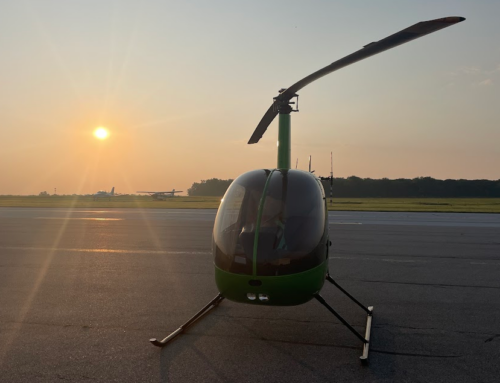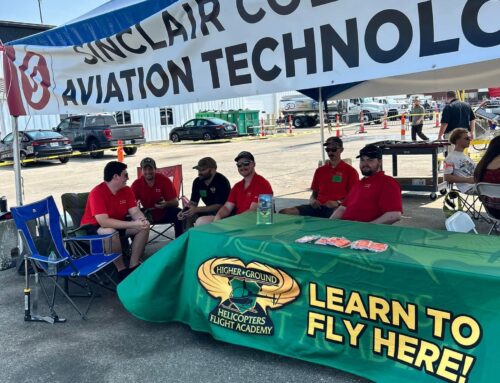Helicopter training schools connected to colleges give you time to build your entire future. These programs blend hands-on flight training with college degrees, financial aid, and career support that standalone schools can’t match. You learn to fly, preparing for a lasting career in aviation.
According to SkyQuest, the helicopter pilot industry is projected to grow by 6% through 2031, creating thousands of new job opportunities. If you’ve dreamed of flying helicopters professionally, choosing a college-affiliated program gives you the strongest foundation for success.
Whether you’re changing careers or starting fresh, these programs fit your life. Many offer flexible schedules and direct job pathways with partner employers. College-linked helicopter training schools focus on your success on the ground and in the sky.
Is It Hard to Pass Pilot School?
Pilot training is challenging, but rewarding and worthwhile. The difficulty depends on your preparation, dedication, and training quality. College-affiliated programs often have a higher pass rate due to superior instruction and higher standards.
Students succeed when they:
- Attend every ground school session consistently
- Study regularly, not just before exams
- Ask questions when concepts seem unclear
- Practice procedures until they become automatic
- Maintain positive attitudes through challenges
- Use college support resources available
College programs provide structured support to help you overcome obstacles. As a result, you become a better-prepared expert through pilot career advancement.
Will AI Replace Pilots?
AI isn’t a threat to aviation. While AI is a powerful tool that will help pilots, it’s unlikely to fully take over the job due to the need for human experience. Human pilots are essential for their judgment, leadership, and ability to handle unforeseen situations that AI can’t manage.
What Are the 8 Benefits of Attending College-Linked Helicopter Training Schools?
Choosing a college-linked helicopter training school sets you up for long-term career success. Here are some flight training benefits:
1. Access to Financial Aid and Student Grants
College-affiliated flight schools offer funding options that standalone schools can’t offer. When you enroll in a degree program, you become eligible for:
- State grants
- Veteran benefits
- Federal financial aid
- Institutional scholarships
Helicopter flight training costs can be expensive. Financial aid dramatically reduces your out-of-pocket expenses and makes your aviation dreams achievable.
2. Earn College Degrees While Training
Why settle for just a pilot’s license when you can earn an Associate’s or Bachelor’s degree as well? Collegiate aviation schools allow you to accomplish both goals at once, maximizing your investment.
As per Beal University, graduates with an associate degree earn an average of $1,005 per week. This figure shows the strong financial advantage of pursuing higher education.
3. Superior Training Standards and Higher Pass Rates
College-linked helicopter training schools maintain standards that exceed FAA requirements. Part 141 schools must follow FAA-approved curricula that ensure consistent, high-quality training.
Programs like Higher Ground Helicopters hold students to much higher standards than FAA minimums. Here is what sets them apart:
- Additional flight hours and maneuvers practice
- Stricter evaluation during training flights
- Enhanced safety protocols and procedures
- Robinson Safety Course included in training
- Regular progress assessments and feedback sessions
- Comprehensive ground school beyond basic requirements
This rigorous approach builds superior skills and judgment. Employers recognize graduates from quality college-affiliated programs as better-prepared professionals.
4. Flexible Scheduling for Working Professionals
One of the biggest benefits of collegiate aviation schools is flexible scheduling. This schedule lets you maintain your full-time job while training full-time. You keep earning income, avoid financial stress, and complete your program without career interruption.
5. Direct Pipeline to Employment Opportunities
Many college-affiliated flight schools hire their top graduates as Certified Flight Instructors. Higher Ground Helicopters often hires its best students to replace CFIs who advance to higher-level positions. This creates a steady flow of new opportunities.
6. Enhanced Professional Reputation
College-linked programs build strong reputations for producing higher-caliber pilots. Higher Ground Helicopters’ commitment to exceeding FAA standards creates graduates known for superior skills and professionalism.
When you graduate from a college-affiliated program, employers immediately recognize your enhanced preparation. Your resume stands out in competitive job markets.
7. Comprehensive Aviation Education
Aviation education programs at colleges cover far more than basic flying skills. Your coursework at Higher Ground Helicopters includes:
- Private Rating (50 hours total time)
- Instrument Rating
- Commercial Rating (100 hours total time)
- CFI Rating (50 hours)
- CFII Rating (200 hours total)
- Robinson Safety Course
- All ground courses and materials
- Books and headset included
- All checkrides and written exams
This comprehensive approach ensures you’re completely prepared for professional aviation careers.
8. Professional Networks and Resources
College programs provide access to extensive professional networks unavailable at standalone schools. You’ll connect with experienced faculty with industry connections and alumni working throughout the aviation sector. Additionally, you can connect with industry partners and employers.
Frequently Asked Questions
Can I Be a Pilot If I’m Bad at Math?
Yes, you don’t need advanced math to become a helicopter pilot. Basic math skills like addition, subtraction, and simple multiplication are enough.
Modern tools, such as flight computers, calculators, and planning software, handle complex work. You’ll use math for fuel planning, weight and balance, and time or distance calculations.
What Is the 3:1 Rule for Pilots?
The 3:1 rule of descent is a helpful rule of thumb in aviation. It states that you should allow 3 nautical miles of travel for every 1,000 feet of altitude you need to descend.
For example, dropping 2,500 feet means starting 7.5 miles out. It helps keep descents steady and safe.
Do You Need 20/20 Vision to Be a Pilot?
Federal Aviation Regulations say pilots must have 20/20 distant vision or better, with or without glasses or contacts, in each eye to get a first- or second-class medical certificate. For near vision at 16 inches, the rule is 20/40 in each eye. You can wear corrective lenses as long as you meet these vision standards.
Take Flight With Your Future Today
The path to becoming a professional helicopter pilot is easy. Helicopter training schools affiliated with colleges offer superior training standards with flexible schedules.
At Higher Ground Helicopters, we’re proud to partner with Sinclair Community College as a Part 141 flight school. We serve the greater Midwest with helicopter flight training, tours, and charters. Our unique approach combines the resources of collegiate education with focused professional training.
Reach out to us today to learn more about our programs.









